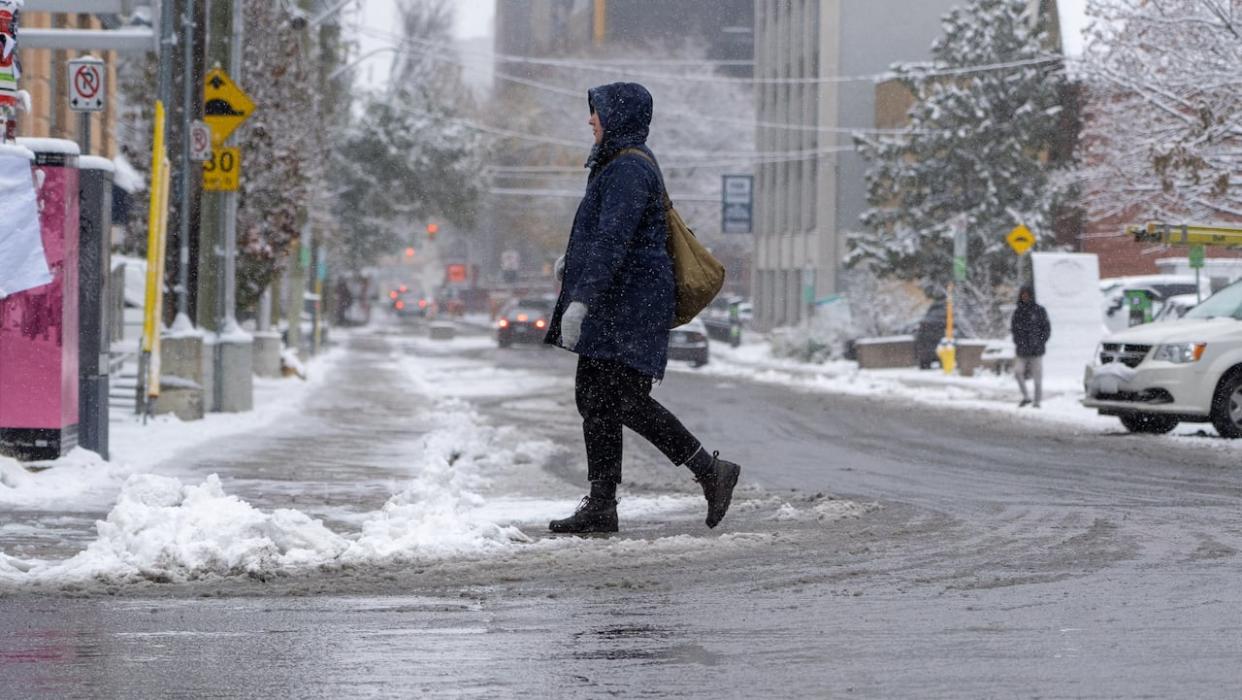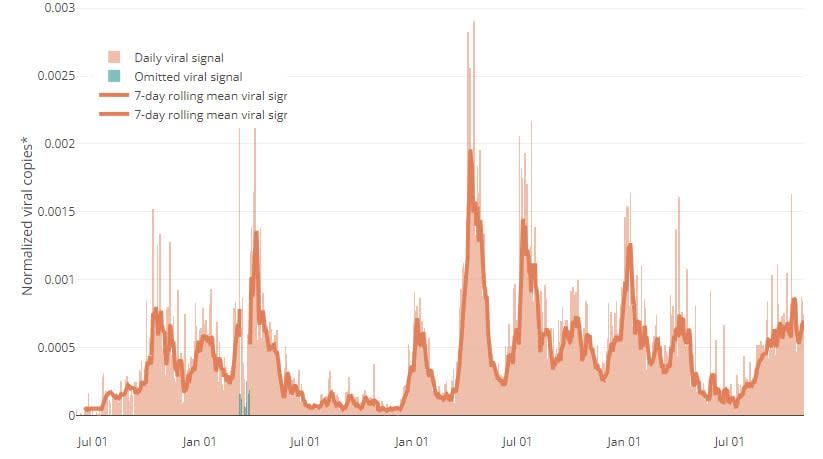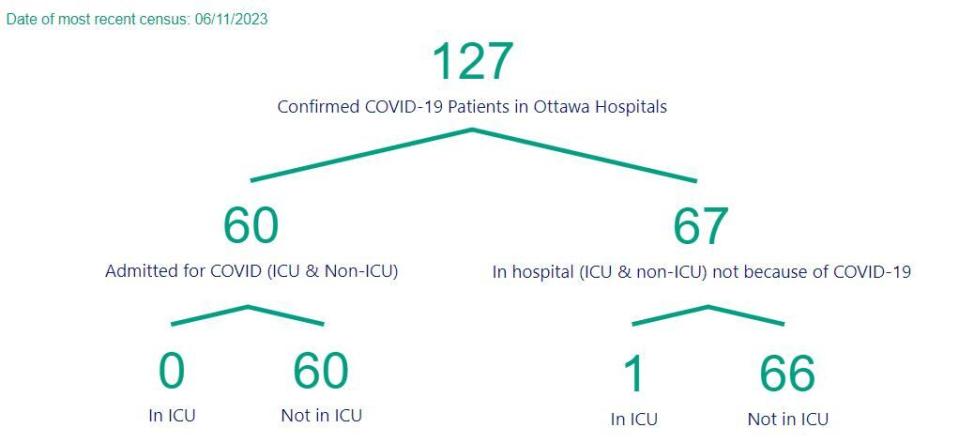As snow falls, COVID situation stands firm

Recent developments:
Ottawa's COVID-19 numbers are mostly stable.
Its individual trends range from moderate to very high.
RSV activity is generally moderate, while flu activity is mostly low.
Nine more local COVID deaths have been reported.
The latest
The city's COVID-19 numbers to watch are again mostly stable at levels ranging from moderate to very high in this week's Ottawa Public Health (OPH) updates.
It has a generally moderate amount of respiratory syncytial virus (RSV) activity and a generally low level of flu. Some of the individual trends are categorized as high, namely the flu signal in the city's wastewater and the 11 RSV hospitalizations in the past week.
OPH says the city's health-care institutions remain at a high risk from respiratory illnesses, as they have been since September.
Experts recommend that people cover coughs and sneezes, wear masks, keep their hands and often-touched surfaces clean, stay home when sick and keep up to date with COVID and flu vaccines to help protect themselves and vulnerable people.
Wastewater
Data from the research team shows, as of Nov. 5, the average coronavirus wastewater level has been generally stable for about six weeks at a level OPH currently considers very high.

Researchers have measured and shared the amount of novel coronavirus in Ottawa's wastewater since June 2020. The most recent data is from Nov. 5, 2023. (613covid.ca)
Hospitals
The average number of Ottawa residents in local hospitals for COVID-19 in the last week is stable at 49, with no patients in an ICU.
A separate count — that includes patients who tested positive for COVID after being admitted for other reasons, were admitted for lingering COVID complications and were transferred from other health units — is up slightly.

Ottawa Public Health has a COVID-19 hospital count that shows all hospital patients who tested positive for COVID, including those admitted for other reasons and who live in other areas. (Ottawa Public Health)
There were 31 new patients from the previous week, which OPH labels as moderate.
Tests, outbreaks, deaths and vaccines
The city's weekly average test positivity rate is about 16 per cent, which is stable. OPH says this is high.
OPH also says there are a stable 31 active COVID outbreaks. Most outbreaks are in either retirement homes or hospitals, and there are a high amount of new outbreaks.
The health unit reported 211 more COVID cases in the last week and five more COVID deaths. One victim was in their 60s, two in their 70s and two age 90 or above.
OPH's monthly COVID vaccination update says it administered about 46,000 doses from Oct. 3 to 30, the day Ontario's eligibility widened. The 20,764 doses the week of Oct. 22-28 are its most in nearly a year.
As of Oct. 30, nine per cent of Ottawa residents age five and up had a COVID booster in the last six months, up from six per cent at the start of the month. This doesn't account for immunity through infection.
Across the region
Spread and vaccination
The Kingston area's health unit says its COVID trends are stable at moderate to very high levels and it's in a high-risk time for transmission. Flu indicators are low and RSV trends are either low or moderate.
Its average coronavirus wastewater reading is considered high and stable. In Hawkesbury and Cornwall, it's stable.
The average COVID-19 test positivity rate drops to 13 per cent in the Eastern Ontario Health Unit (EOHU) and sits at a stable 15 per cent in the Kingston area.
Hastings Prince Edward (HPE) Public Health says 10 per cent of its residents have had a COVID vaccine in the last six months.
Hospitalizations and deaths
The Kingston area's health unit says it has 30 active COVID-19 patients in its hospitals, including anyone living in a different health unit. That is categorized as very high.
The number of hospitalizations in Leeds, Grenville and Lanark (LGL) counties drops to two and in the EOHU, there are eight, which is stable.
HPE, like Ottawa, gives a weekly hospitalization average. It rises again from 13 to 25 — its highest level in a year — with three intensive care patients.
Western Quebec has 84 hospital patients with COVID, which is categorized as stable. The province reported three more COVID deaths there for a total of 506 since the pandemic began in early 2020.
The EOHU reports its 319th total COVID death, which is its 41st of 2023.


